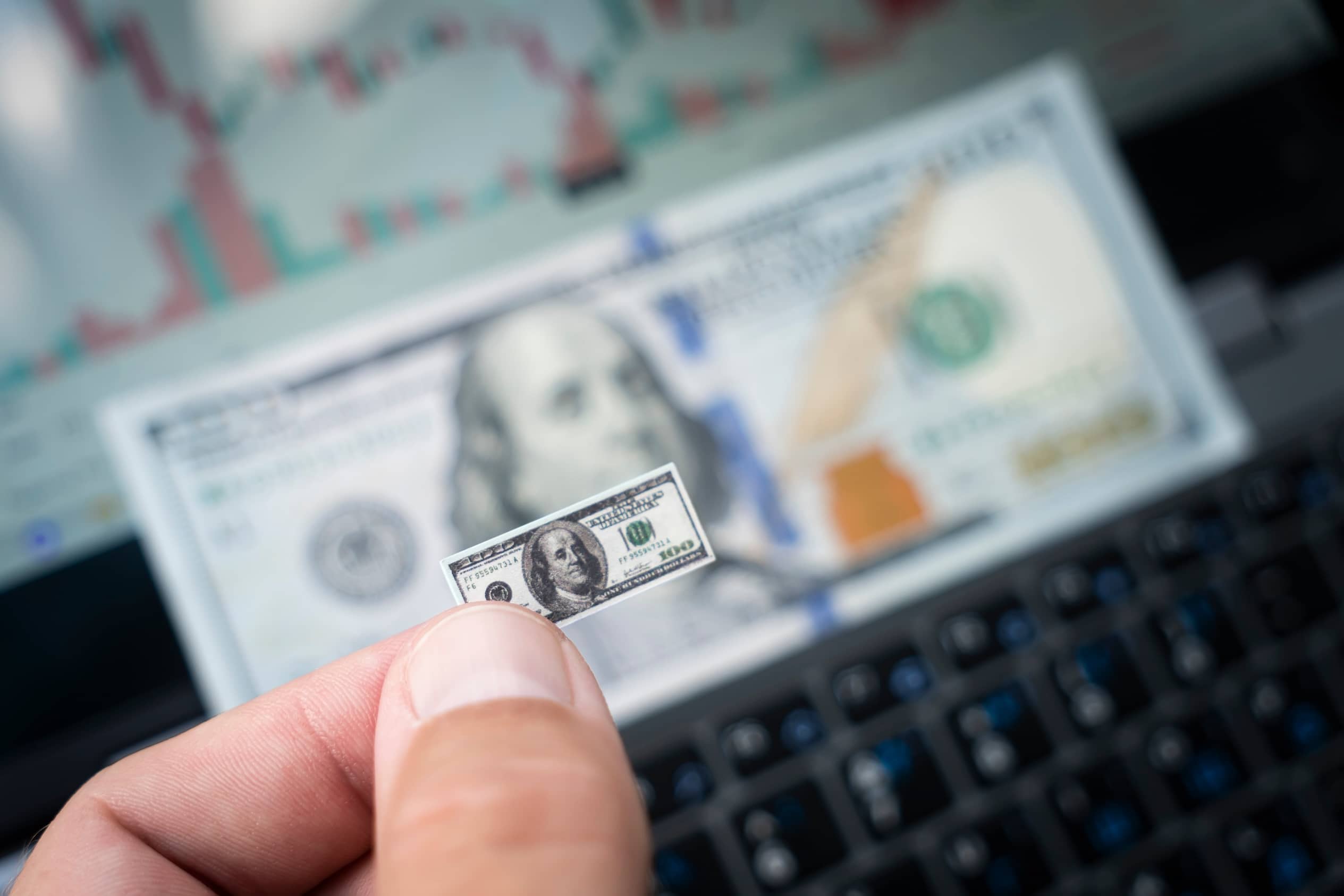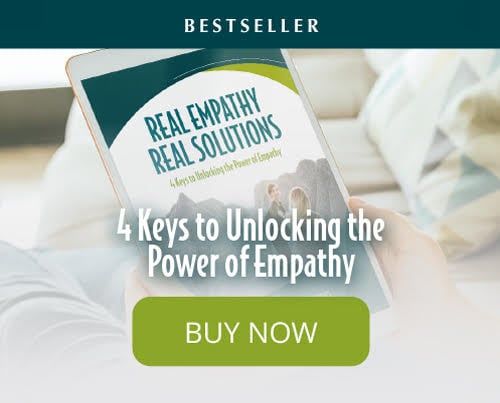If money were a person, how would you describe your relationship? Trusting and appreciative? Or riddled with guilt, avoidance, and stress? Most people don’t realize that their financial behavior is less about numbers and more about the emotions, patterns, and stories they carry.
What if your relationship with money were like a love story?
Estimated reading time: 5 minutes

Heartmanity partners with outstanding companies and products we wholeheartedly recommend so this post may contain affiliate links. As an Amazon Associate, I earn from qualifying purchases at no extra cost to you. You can read our full disclosure here. Thank you for supporting Heartmanity's mission and helping us provide quality content!
When we treat money simply like a transaction, it remains separate and abstract. However, when we approach money and finances with emotional intelligence—with attention and clear boundaries—our financial well-being transforms itself.
The truth?
We get everything we want by saying no to everything we don’t want. Until our actions match our desires and words, nothing changes.
Your bank account is a reflection of your inner world.
Healing Your Relationship with Money
Creating a healthy relationship with money was a long and winding journey for me. I’ll be the first to admit that I have expensive tastes, an insatiable love of beauty, and I’m known for my huge, unrestrained creative bursts. These flares of creativity—both in my personal life and business—weren’t always restrained by practicality, causing unnecessary debt.
I had to learn how to create while also honoring a budget—yes, I resisted it, for sure! Budgeting felt like a straitjacket to an Olympic gymnast. Ugh.
Then, I started studying minimalism and the freedom that comes with simplicity. My desire grew rapidly to expand the healing of my past to transform my relationship with money as well. Extending my skills to better my relationship with money was a life-changing process. The first step was to be compassionate and firmly honest with myself yet simultaneously open to possibilities.
A colleague and friend recommended I use a money app; it's how she managed her money. You may find the convenience, structure, tracking, and support helpful; I found them helpful. A budget allowed me to be as creative and visionary as I liked while also grounding in practicality and wise choices.
Accompanying the practical, one of the things I’m proficient at is repatterning belief systems and how they limit our true expression. Turning that skill to myself, I redefined all my money beliefs and started envisioning the delicious relationship I wanted with money.
For instance, having money was dangerous for me as a kid since my older brother bullied me mercilessly for it. Not having any was safer than having it. So, to change my belief and money relationship I had to gather lot of evidence and identify all the ways money created safety.
My life is full of plentiful, thriving relationships; money was the last to heal for me. Maybe the deprivation of my traumatic childhood kept me in a sense of entitlement that I was owed.
So, it’s your turn. What’s your money story?

Unearth Your Money Story: Meet Your Money Self
Sometimes, finances need to take a sharp detour away from numbers, budgets, expense columns, goals, and spreadsheets. After all, underneath all financial success or failure lies our money story.
Let’s start with your “money self.”
Every money habit has roots.
Perhaps you grew up with feast-or-famine cycles or cringed when your parents argued over bills. Your nervous system remembers. Your body holds the records. Unpacking this story will help you rewrite the narrative.
Ask yourself: “What messages did I absorb about money growing up?” Was it freedom? Scarcity? Power? Shame? (Danger like me?)
If you don’t have a journal, grab one to fit your personality. I happen to like lines, but there are plenty of choices!
Journals record your journey. They come in handy when developing your relationship with money. Becoming emotionally intelligent with your finances begins with self-awareness, including identifying your emotional spending patterns.
Journal Prompts:
- Finish this sentence: “Money makes me feel .”
- If I described my relationship with money, what adjectives would I use?
- Who is the most cherished person in my life? How do I treat this person compared to how I treat money?
- What makes a relationship happy?
- What words describe the relationship with money that I want?
Related reading: "Mindfulness: How to Have Mindful Mornings that Can Change Your Day."
Build Money Intelligence (aka Emotional Intelligence for Finances)
Think of emotional intelligence as your financial inner tech. Without it, even the best financial plan can unravel.
Why?
Because emotional triggers around money, such as a fear of not having enough, buying things to feel better, then guilt after spending, shame about debt, or anxiety about the future, can erode financial peace and security.
Try this practice: Before making any purchase, pause. Take three deep breaths. Ask, “What emotion is driving this decision?”
For me, I loved the dopamine surge, a pathway to pleasure, I’d get from purchasing beautiful things like artwork, landscaping flowers, or unique furniture.
PRO TIP: Regulate your emotions before making big money decisions.
Mastering your inner state is more powerful than mastering the stock market. When we regulate our emotions, our actions and choices are guided by our values. Restraint in spending becomes like a warm hug from a loved one.
Now, each time I need to slow down my spending, the constraint inspires me. I ask myself and determine what is MOST valuable to me and what investments of time, energy and money bring me the most value and joy.
Design a Relationship with Money You Love and Can Trust
What if earning, budgeting, saving, and investing were a support system—a quiet partner helping you build a life you love?
When we align with our values, money becomes a tool for self-expression and purpose. Let your earnings, spending, savings, and investing reflect your truth.
Here are three great practices to do just that!
Create a Value-Centered Financial Map
Traditional budgeting, as I mentioned before, can feel off-putting, limiting, or even claustrophobic. Instead, try value-aligned spending and saving.
- Replace the word “budget” with “conscious flow.
- Track spending with curiosity, not judgment.
- Use money-tracking apps like a mirror, not a magnifying glass.
Treat money like you would a precious relationship: Check in, be honest, and adjust with compassion.
One of the most critical things in developing a healthy relationship with money is aligning your finances with what matters most to you. That’s why getting clear on your values is vital. Every person is unique in how they design their money map.
Step 1: Define Your Core Values
Start by identifying the values that matter most to you. Your core values are the compass that should guide your financial decisions.
Ask Yourself:
- What principles guide my life choices?
- When do I feel the most proud, alive, and fulfilled?
- What do I want my money to support?
Example Values: Freedom, Family, Wholesome living, Integrity, Simplicity, Generosity, Adventure, or Security
Action: Write down your top three core values. These will lay the foundation for your financial map.
Step 2: Audit Your Current Spending
Track your spending over the past 30–60 days and categorize your expenses. Notice patterns, priorities, and potential misalignments.
Focus on:
- Fixed expenses (e.g., rent, utilities)
- Variable expenses (e.g., food, transportation)
- Discretionary spending (e.g., clothing, subscriptions, entertainment)
Reflection:
Does my spending reflect my values? Are there areas where my money is going toward things I don’t deeply care about?
Step 3: Identify Emotional Patterns with Money
Financial habits are often driven by emotions, not logic. Recognizing emotional triggers is key to creating change.
Common Patterns to Look For:
- Guilt spending (“I deserve this after a hard day.”)
- Fear-based hoarding (“I might need this someday.”)
- People-pleasing (“I didn’t want to say no.”)
- Impulse buying to avoid discomfort or boredom.
- Shopping without a plan whenever money is received.
One way to build awareness is through journaling. It can help you connect your emotions with your spending and get you in touch with what truly matters to you.
Step 4: Set Value-Aligned Financial Goals
Now that your values and spending patterns are clear, align your financial goals with what matters most to you. Below is a simple chart that illustrates this practice.
|
Value |
Aligned Financial Goal |
|
Family |
Monthly memory-making activity. Create a college savings account or vacation fund. |
|
Simplicity |
Cut clutter spending, reduce monthly subscriptions, and discard anything we don't value, love or use. |
|
Generosity |
Tithe or set aside a monthly budget for charity. |
|
Freedom |
Pay off my school loan, build a six-month emergency fund, and review financial goals every Sunday. |
|
Adventure |
Create a savings account for travel and adventure. Contribute amount every month. Plan our next trip. |
Intentional Action: Choose three goals that align with your top values to work toward in the next 6–12 months.
Step 5: Draw Your Financial Map
You can create a chart in Word or Excel easily like the above example. You can also create a financial map as a visual tool by drawing a mind map, which can help you connect your daily decisions with long-term values and goals.
Simple Mind Map Instructions:
At the center, list your top three to five core values. Around each value, identify 2–3 aligned financial goals or habits. Use arrows or branches to show how weekly actions feed into those goals.
Next, create small, measurable steps for each area (e.g., “save $50 weekly toward travel fund”).
Micro-Exercise: Review your top 3 core values and review your last 10 purchases. Do they match?
Make Wise, Intentional Money Decisions
Emotional intelligence helps you respond, not react. The same goes for finances.
Clarity creates peace. Peace supports wise choices.
Let me tell you a personal story.
A few years ago, my family spent a long weekend at a cabin in Jackson Hole, surrounded by a foot of snow. Montana winters are great for cross-country skiing! After winter fun, we’d settle in and play cards and board games. One of our favorites is Catan.
In the middle of a game, I was delighting in building the longest road, and my son turned to me and said, “Mom, don’t use resources unnecessarily.” I was in the bliss of creating, building, connecting—and forgetting again that restraint creates success. The enjoyment of family time eclipsed the goal of winning altogether.
Conservation is a principal I have come to love and espouse. What he said to me that day has echoed within me ever since.
- Try the “Money Pause”: For nonessential purchases, wait 24 hours. See how it feels the next day.
- Inner Dialogue: “Does this purchase align with my values? Will I still feel good about it tomorrow?”
One of the early tricks I used to put training wheels on my budgeting was when I went shopping in a retail store. I’d be in my abundant self, adding whatever pleased me to the shopping cart. Then, when I approached the checkout, I’d ask the questions above.
Many items were returned to their shelves.
Build Your Financial EQ Toolbox to Cultivate Financial Resilience
Financial security isn’t just about having savings. Many unhappy people have ample money in the bank. It’s about emotional agility and resilience—using money to enrich your life while curbing expenses and spending when needed.
Here are some actions that create a foundation of resiliency:
- Create micro-safety nets: Set up an automatic transfer into a savings account of $10 to $50 a week.
- Set boundaries: Say no when pressured to spend in a way that's out of sync with your values. Set meaningful goals to save for, and then invest when the time is right.
- Redefine success: It’s not about what you earn; it’s how aligned you are with what’s important to you. What is most important to you to build a thriving life?
For instance, if you'd like to invest in the stock market, perhaps begin today acquainting yourself with the topic. Immerse yourself into understanding the market and its ins and outs. Then, set aside a certain amount of money each month for investing. There are many routes to go but the first step is defining your goals. Make sure they support the healthy relationship you'd like to have with money.
Next, find an investing route that you feel comfortable with. Most websites have an educational aspect, but as with any big decision, your due diligence is vital. Research, make inquiries, talk with people who have been investing for a long time. Seek out educational books and websites. For instance, a recent article about purchasing AI stock was explained on WallStreetZen.com.
Self-management is the heart of EQ—whether you’re investing or making a significant purchase such as a house, or learning to budget with your partner, emotional regulation is essential.
By pausing to notice your emotions and responding intentionally, you empower yourself to act in alignment with your values rather than old habits or outside pressure.
This conscious approach isn’t always easy, especially when faced with enticing opportunities, but each time you practice self-regulation through mindful breathing or honest reflection, you strengthen the muscle that leads to financial security—and a healthy relationship with money!
Money Habits to Create a Healthy Money Relationship
Think of every financial interaction as an emotional deposit or withdrawal—not just from your bank account but from your well-being and a valued relationship. When you spend impulsively to soothe stress or overspend to please others, it can feel like an emotional overdraft—temporary relief followed by regret or depletion.
On the flip side, when you save intentionally, invest in aligned priorities, or gift generously from a full cup, you’re making deposits not just into your finances but into your sense of stability and self-respect.
Emotionally intelligent money habits honor this balance. Just like in any relationship, if you constantly withdraw and take without giving and replenishing, resentment and disconnection build. If you fight with your partner more than you connect and love, you’re on your way to overdrawing!
Below are some simple examples of withdrawals versus deposits. It's helpful to create your own customized ledger to grow self-awareness around your typical patterns. Knowledge is power to change to a better version of yourself!

A healthy relationship with money includes asking: Does this action or purchase nourish or drain me relationally, emotionally, and financially?
How you handle money in relationships mirrors how you show up emotionally for yourself and others. Compare a healthy relationship with your current relationship with money. What’s missing? How would you like it to feel differently?
Below are ideas and habits to form that will get you started in the right direction.
- Talk about money like wholesome feelings: Openly, respectfully, and often.
- Schedule “Money Dates” with yourself (and/or your partner): 20-minute weekly check-ins on goals, spending, and values.
- Celebrate successes: Celebrate small wins. Validate yourself as you shift money habits.
- Show yourself compassion when you err: Everyone makes mistakes, and learning financial literacy takes time and attention. Be patient with yourself. When you overspend or buy something impulsively, forgive yourself and recommit, just like you’d apologize if you hurt a friend’s feelings.
- Create a daily gratitude ritual: Express gratitude for the money and abundance already in your life, even small amounts. Try a gratitude journal to prime the pump of the flow of abundance to you!
- Recite a mantra regularly: “I partner with money to build a life of meaning and security.”
Emotional intelligence is the foundation of financial stability. When we take care of money, we take care of ourselves. By emotionally regulating ourselves and applying our values as guardrails, each day builds on the previous one.
Pretty soon, we can see and appreciate just how far we’ve come. Build micro habits that reflect self-worth. Embody the energy you want your bank account to reflect, one of gratitude and love. How you relate to money and your finances can elevate everything.
Fall in Love with Caring for Your Money and Money Relationship
Financial security isn’t built on deprivation. It’s born from emotional maturity, intentional choices, and self-trust.
When you become emotionally intelligent with your finances, you stop chasing money (or squandering it) and start collaborating with it. It is a resource that must be cared for as we would for a prize rose garden. We don’t just expect roses to grow. They must be pruned, fertilized, watered, and appreciated.
Let your relationship with money be one of the most loving and conscious relationships you have.
For customized coaching to empower you with your relationship with money, reach out to Heartmanity!








